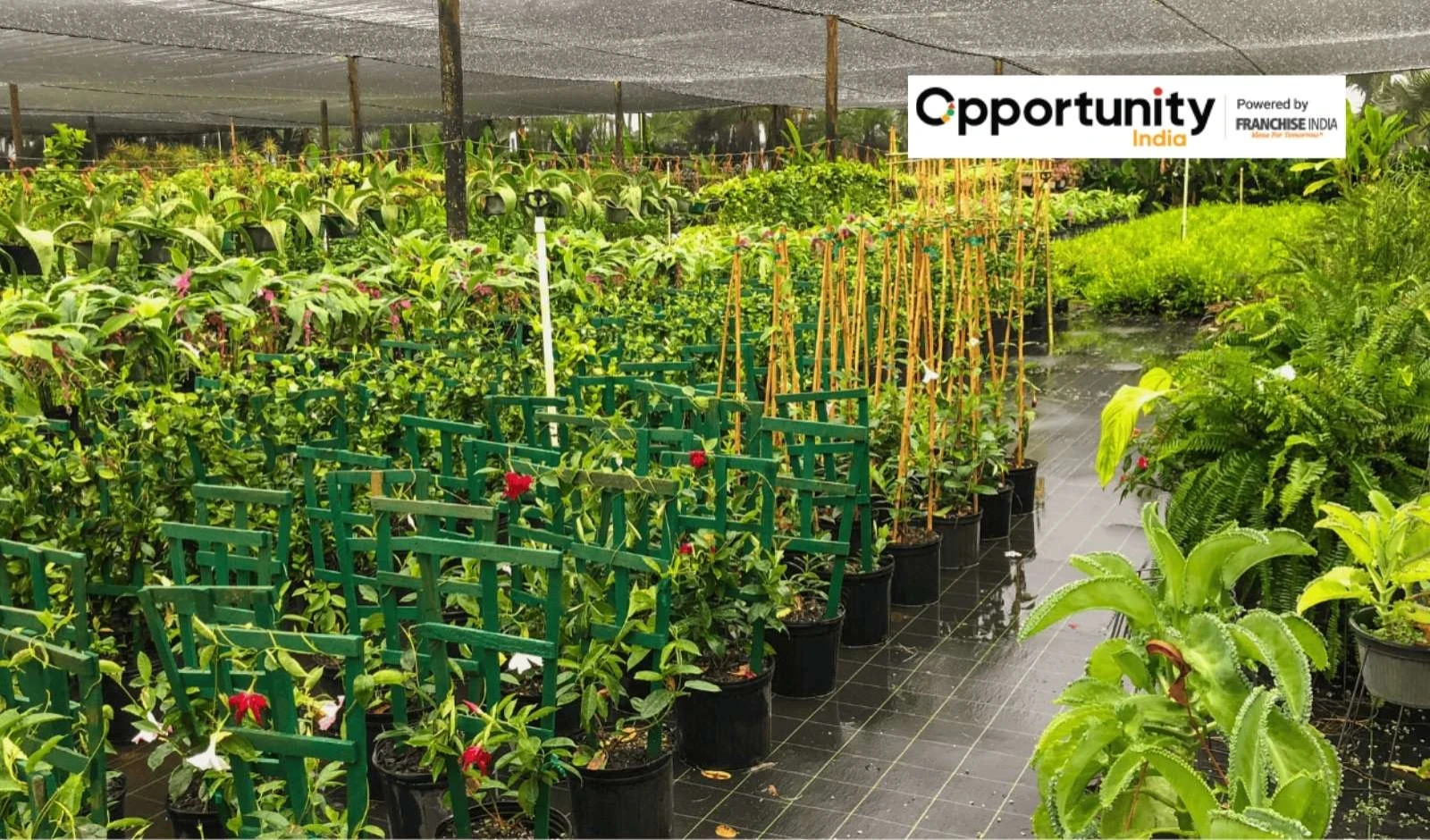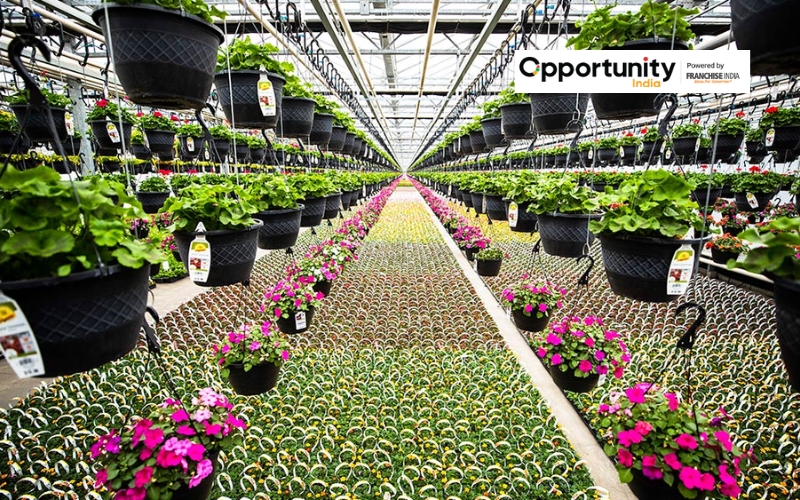
Have you ever considered making a living off of your passion for plants? You might be able to start your own plant nursery. Despite the current craze for indoor plants, home gardens, and landscaping, it's not only serene and environmentally friendly but also unexpectedly profitable. This article is for you if you're serious about starting your own nursery. We'll guide you through every step, from deciding what to grow, to preparing the area, to promoting your plants, to calculating the financial aspects of it all.
Why Start a Nursery Business?
In India, the need for plants, gardening tools, and landscaping ideas is expanding quickly in both urban and rural areas. Starting a plant nursery can be a lucrative and satisfying business because of the growing number of environmentally conscious consumers, real estate development, and a love of greenery. Whether your goal is to sell landscaping trees, fruit trees, medicinal herbs, or ornamental plants, the nursery industry offers opportunities for innovation and steady income.
With the promise of new life, the vivid colors of blossoming flowers, and the scent of fresh earth, it's no surprise that running a plant nursery can be a very fulfilling business. The demand for everything from trees and delicious vegetables to ornamental plants and garden supplies is rising, making it more than simply a hobby.
Consider a business strategy as the blueprint for your nursery. Although it's essential for obtaining money, it's more than simply a document; it's a road map that clarifies your goals, lays out your tactics, and guides you through obstacles.

It's critical to understand the expanding potential in the nursery sector before beginning any planning:
- Growing Urban Greenery: Green belts, rooftop gardens, and vertical plants are becoming increasingly popular in cities.
- Demand From Homes: To improve air quality and décor, homeowners are spending money on both indoor and outdoor plants.
- Government Push: Plant nurseries are supported by programs like AMRUT, Smart Cities Mission, and several reforestation initiatives.
- Low Entrance Barrier: All you need to get started is a basic understanding of plant care and business principles; a degree is not necessary.
- Seasonal Yet Recurrent Income: You can produce a range of plants that do well in different seasons and make money all year long with careful planning.
Types of Nursery Businesses
Choose the kind of nursery you want to operate before you set up. Each has a distinct operational model and target market:
- Retail Nursery: Provides direct sales to homeowners and consumers.
- Wholesale Nursery: Provides large quantities of plants to nurseries, farms, landscapers, and other establishments.
- Plant Propagation Nurseries: These facilities specialize in growing seedlings or saplings from grafts, cuttings, or seeds.
- Online Nursery: Uses e-commerce platforms to deliver plants and gardening supplies right to customers' doorsteps.
- Specialty Nursery: Concentrates on specialized markets such as organic herbs, medicinal plants, exotic indoor plants, and bonsai.
Key Steps to Cultivating Your Nursery Business Plan
Create a Detailed Nursery Business Plan
A strong business strategy is the first step in every successful endeavor. The following should be in your nursery business plan:
- Business name and mission
- Market research: Recognize your target market, rivals, and local demand.
- Range of products: Choose if you want to cultivate fruit trees, bonsai, succulents, herbs, ornamental plants, or all of them.
- Pricing strategy: Maintain competitive rates while factoring in labor, fertilizer, soil, and pot costs.
- Marketing plan: Make use of online resources, regional shows, and collaborations with real estate developers or interior designers.
- Financial plan: Projected revenue, monthly operational expenses, and setup charges should all be included.
- Licensing and Legal Requirements
A solid plan will guide you and, if necessary, assist in obtaining government grants or loans.
Select an Ideal Location
Selecting the ideal site is crucial to a nursery business's success. Important elements consist of:
- Sunshine: Direct sunshine is necessary for most plants. Select an open space that receives plenty of sunlight.
- Water supply: Make sure there is a steady supply of clean water available because plants require frequent watering.
- Soil quality: The base soil should be nutrient-rich and well-draining, even if you plan to utilize grow bags or pots.
- Accessibility: Pick a location that is close to your target market, such as in a city or next to a market.
- Room for growth: Include parking, show areas, potting sheds, greenhouses, and walkways.
For small-scale retail, a nursery of at least 1,000 square feet is advised, but a wholesale nursery would need more than an acre.
Setup Infrastructure
Establishing fundamental infrastructure is the next step after obtaining the land:
- Greenhouses and Shading: Depending on the kind of plant, construct tunnels, shade nets, or polyhouses. These aid in controlling humidity and temperature.
- Irrigation System: Install sprinkler or drip irrigation systems to save work and manage water effectively.
- Storage and Potting Shed: To store tools, fertilizer, compost, and potting soil, you'll need a shed.
- Containers and Nursery Beds: Assemble pots, grow bags, and raised beds for various plant species.
- Security and Fencing: Make sure the high-value plant stock is safe and secure the space with appropriate fencing.
Decide What to Grow
Choose plants according to market need, season, environment, and degree of maintenance. A list of plants that are well-diversified could contain:
- Flowering plants: Hibiscus, rose, marigold, jasmine, petunia
- Indoor plants: Money plant, spider plant, snake plant, peace lily
- Fruit plants: Mango, guava, lemon, pomegranate, banana
- Medicinal plants: Aloe vera, tulsi, ashwagandha, neem
- Landscaping trees: Ashoka, ficus, palm, bamboo
- Seasonal plants and seedlings: Tomato, brinjal, spinach, herbs
Your niche and profitability will be determined by the plants you choose, so thoroughly study local demand.
Source Tools, Seeds, and Saplings
Healthy plants are the result of high-quality inputs. Establish a solid rapport with trustworthy seed and sapling providers. Additionally, you'll need tools like
- Trowels, cutters, and pruners
- Hose pipes and watering cans
- Organic/inorganic fertilizers and pesticides
- Trays, plastic pots, and grow bags
- Soil mixtures and compost bins
Learn about seeding, layering, and grafting processes if you're propagating plants.
Hire and Train Labor
Depending on the size of your nursery, you might require two to four employees to help with planting, watering, packaging, and maintenance. Although labor costs vary by region, they should be included in monthly expenses. To maintain quality standards, teach your employees fundamental plant care, pest management, and customer service techniques.
Register Your Business
Even if a lot of small nurseries run unofficially, it's still a good idea to register the business you run for reputation and growth:
- Registration of a business (Udyam or MSME)
- GST registration if the turnover surpasses the threshold
- Selling plant-based foods or herbal items requires an FSSAI license.
- Your local horticulture department may provide you with a nursery license.
- The local municipal authority's trade license
Additionally, find out if you qualify for government programs like NABARD subsidies for horticultural enterprises.

Promote Your Nursery
Even during off-peak times, a solid marketing strategy will keep clients coming in. Integrate internet and offline marketing:
Offline Channels
- In housing societies, hand out flyers and banners.
- Open booths at flower shows, farmers' markets, or exhibits.
- Collaborate with garden planners, architects, and landscapers.
Online Channels
- For local visibility, make a Google Business profile.
- Promote plant collections and deals on Facebook, Instagram, and WhatsApp.
- Create a basic website or offer your nursery on websites that sell plants, such as Nurserylive or Ugaoo.
- Provide indoor or balcony garden kits with delivery options and subscription programs.
Initial Investment Breakdown: Nursery Business
Here's a rough estimate for a small-scale nursery setup on 1,000–2,000 sq. ft. of land:
| Expense | Estimated Cost (INR) |
|---|---|
| Land lease (optional) | ₹50,000–₹1,00,000/year |
| Shade net / polyhouse | ₹1,00,000–₹2,00,000 |
| Irrigation system | ₹30,000–₹50,000 |
| Seeds and saplings | ₹20,000–₹50,000 |
| Tools and pots | ₹25,000 |
| Shed and infrastructure | ₹50,000 |
| Marketing and signage | ₹10,000 |
| Total | ₹3.5–5 lakhs |
Establishing a nursery involves more than just selling plants; it also entails developing a green, sustainable business. With the right strategy, enthusiasm, and market knowledge, even a tiny nursery may grow into a successful enterprise. The nursery industry provides a low-cost entry point with long-term growth possibilities, regardless of your level of gardening experience or entrepreneurial aspirations. Just keep in mind to start small, keep learning, and modify your products in response to industry trends.

